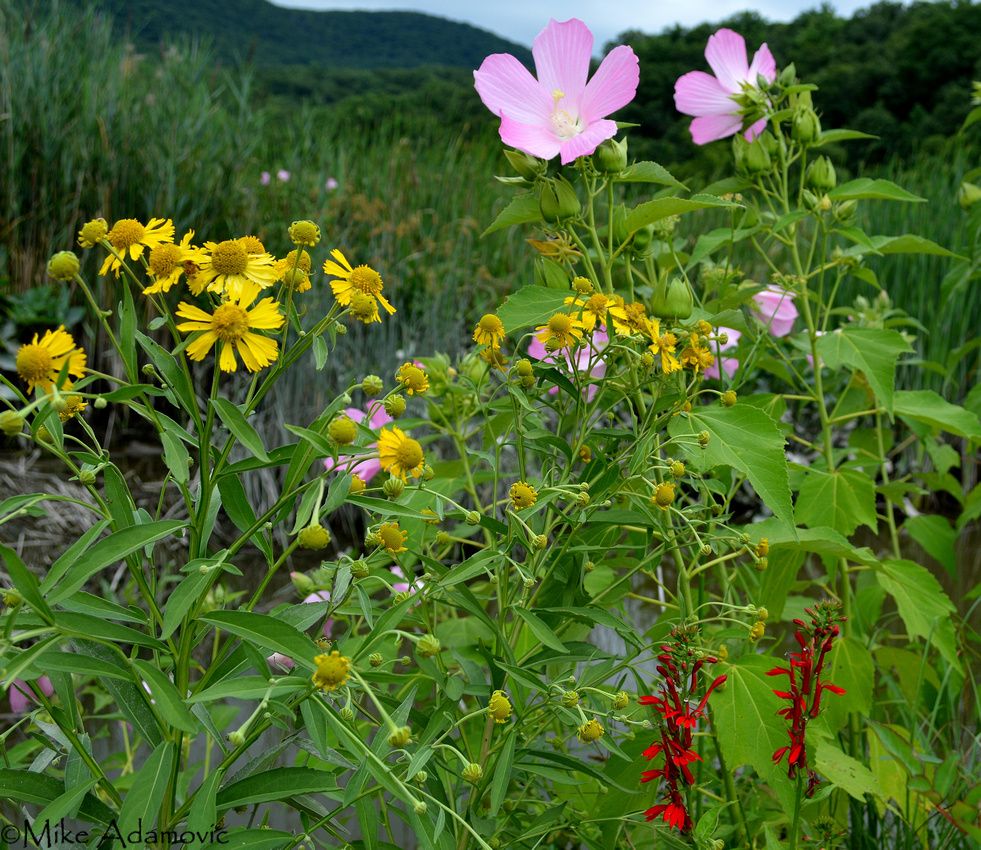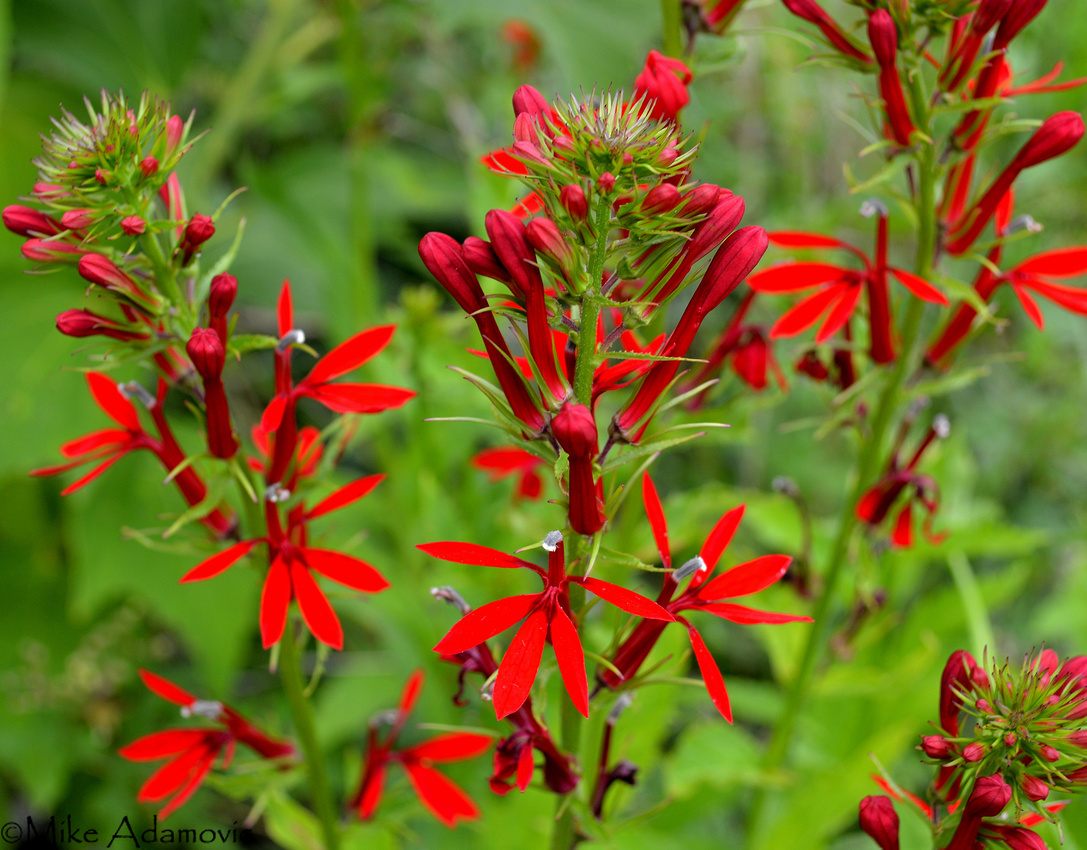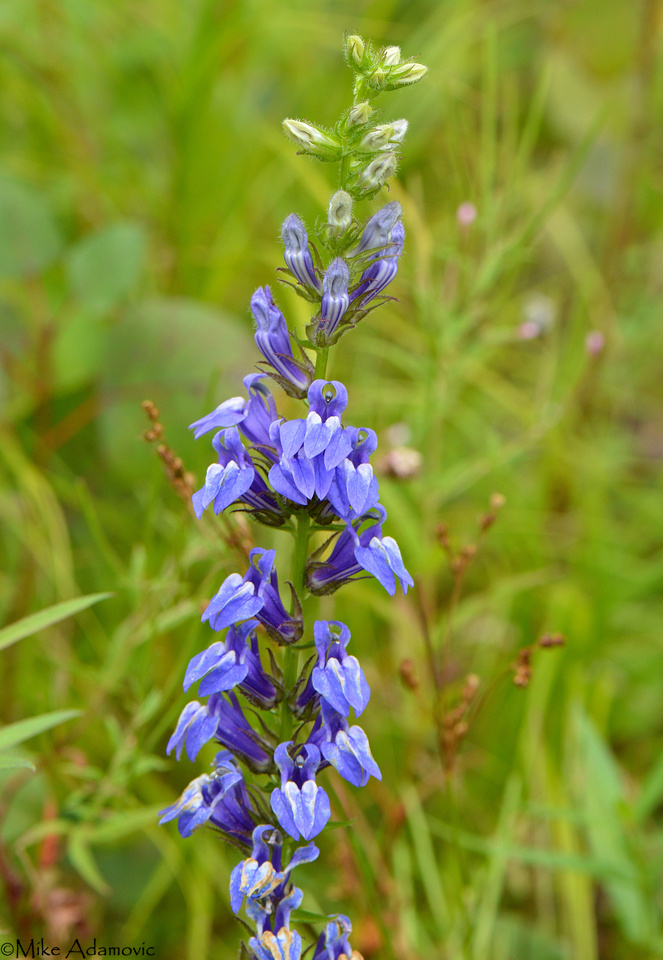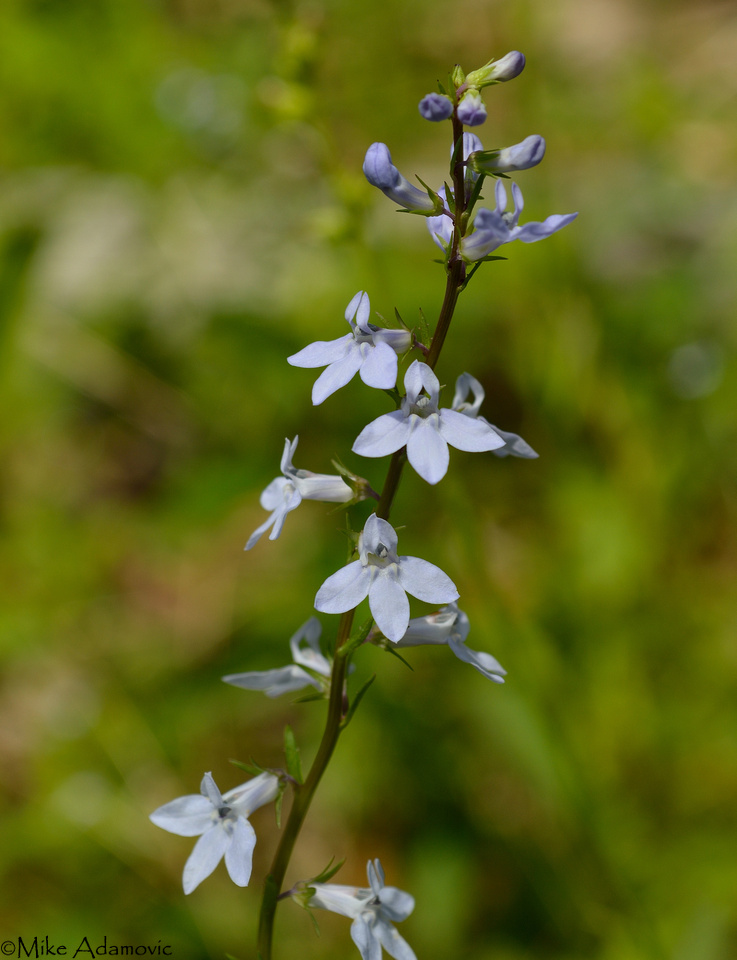The Colorful Lobelias


During the latter half of the summer season flowers of the genus Lobelia first make their appearance, adding gaudy splashes of color to the overwhelmingly verdant surroundings that take hold of the landscape after the last of the vibrant spring ephemerals have faded away and before the tawny autumnal tints arrive. Coming in an unusually varied and vivid bunch, the hues garnered by this genus can easily be mistaken as originating from some foreign or tropical locale, particularly when it comes to cardinal flower and great blue lobelia, the brightest and showiest of the group, which resemble imported garden escapees. But, in reality, these vibrant reds and blues that glow as brightly as neon lights in our seemingly tempered forests and wetlands are in fact native to the U.S.
Awarded the honor of “America’s favorite” by Roger Tory Peterson in his wildflower field guide, it’s easy to see why the fiery-red cardinal flower has gained such an impressive reputation. Standing between 2-5 feet tall with a color brighter than even the bird endowed with the same name, it’s unlikely to go unnoticed. Moreover, each plant usually bears a dozen or more blossoms along the plant’s slender spike that rises above all surrounding herbaceous vegetation; such floral extravagance “dazzles you,” as Thoreau voiced. John Burroughs, another poet-naturalist, in upstate New York, was similarly impressed with the species—enough so to write a poem about the cardinal flower in which he described the vivid plant a “heart-throb of color.”


This color comes in handy for attracting ruby-throated hummingbirds, the cardinal flower’s chief pollinator and sole hummingbird species native to the Northeast. As one of the few northern plants possessing red flowers—the hummingbirds color of choice—it’s the main reason these birds have been able to successively colonize our region. Both species find themselves mutually reliant on one another, and, not surprisingly, therefore have closely overlapping ranges. A decline of either species will inevitably result in a similar loss for the other.
The shape of the tubular flowers have evolved to facilitate pollination by long-tongued creatures. Aside from hummingbirds, butterflies appear to be the only other pollinator capable of extracting the deeply sequestered nectar.
The derivation of the plant’s name is not what you might think. While it’s tempting to conclude that the flower was named after the scarlet bird, or vice-versa, the naming of both actually harkens back to Europe. Clerics of the Catholic Church, called cardinals, wear cloaks of an identical hue—whence comes the name.
On the other side of the color spectrum lies the great blue lobelia, a plant hardly less impressive than its scarlet-tinted cousin, sporting flowers imbued with a twilight azure of fading evening skies. Eloise Butler, an early 20th Century botanist, describes it filling late summer meadows “in such opulence” that the surroundings morph into an artwork seemingly “gemmed with lapis lazuli and rimmed with goldenrod.” This species is smaller, but more robust than the slender 3-6 foot tall cardinal flower, having its inch long blossoms more tightly packed and condensed. With these concentrated features its color presentation is dramatic and indeed gem-like.


As red attracts hummingbirds, blue, it seems, is the prime color to draw bees. Evolutionary speaking, it’s generally thought to be the most advanced flower color. Green emerged first, and then with a linear progression, white and yellow, red, and lastly the deep and enigmatic blues, developed. While bees are the main pollinators, hummingbirds will pay the occasional visit, although the stouter flowers favor pollination by the former.
The plant’s Latin name, siphilatica, is in reference to it having been used in years past as a treatment for syphilis. Native Americans held its efficacy in high enough esteem that enterprising colonizers had it exported overseas. European physicians, however, failed to find it of any use.


Various tribes also believed it to possess magical qualities. Legend has it that if L. siphilatica is dried, ground into powder, and thrown into the winds of an approaching storm, it has the power to render them benign. The Iroquois steeped the plant in hot water and drank a concoction of it at night to ward off spells and other bewitchments.
Lobelia inflata, commonly known as Indian tobacco, is another related species which has been used for a multitude of restorative purposes. Unlike the name suggests, the plant was not recreationally used; it was smoked only occasionally for medicinal purposes. Aboriginal inhabitants employed it mainly to treat asthma and other lung ailments. Ironically, modern research has shown the plant contains an alkaloid which has the potential to help smokers quit.


Its other chief use was as an emetic, meaning it induces vomiting. Other names for the plant consist of gagroot, puke and vomitweed. The plant has such an acrid taste that even the most ravenous livestock will avoid it. The ever-curious Thoreau himself tried the plant once noting that “tasting one such herb convinces me that there are such things as drugs which may either kill or cure.” A tea made from the leaves is so potent that in 1879 a Canadian farmer was confident enough in the plant’s ability to cause vomiting that he was recorded as humorously betting a team of horses that drinking the liquid would do the trick. Numerous historical accounts attest to its efficacy for such purgative purposes.
Indian tobacco’s diminutive ¼ inch long flowers are studded along the length of the upright spike with a density much lower than the lobelias already described and bear a purple pastel coloration. Due to these factors, it’s by far the most frequently overlooked in the bunch, although its distinctive inflated seed pods, similar in appearance to small unripe grapes, make it easy pick out among a mass of vegetation. Though prized more for its medicinal merits than its beauty, an up-close look at its finely crafted blossoms is sure to draw admiration and respect.
All three plants can be found in bloom from August to September. Indian tobacco arrives a bit sooner, sometimes as early as mid-July and thrives in drier woodland habitats less conducive to its soggy-dwelling brethren. It’s not unusual to spot individuals growing in thin soils along rocky trails on the sides of mostly xeric mountains. Cardinal flower and great blue lobelia, in contrast, prefer much moister environs, usually inhabiting the borders of streams, rivers, and other perpetually damp areas offering abundant sunlight.
It’s certainly not much of a challenge to find these plants in areas in which they grow. All stand tall and erect with an air of confidence, matured from the flowers of spring that barely rear their shy heads above the detritus of the forest floor. As the year progresses each successive burst of flowering plants must reach higher than their predecessors if they wish to be seen and pollinated. They must keep in step with the ever-rising herbaceous vegetation that surrounds, consisting mostly of grasses and weeds, which by the time the lobelias put forth flowers can reach waist height or higher. With all the energy these plants have to expend to outcompete their duller competitors, it would be a shame to have such visually impressive displays be for naught. Get out there and search—it takes only a fraction of the time to find these common beauties than it would to locate rarer species endowed with a similar level of elegance.
Other local lobelias:




Pale-spiked lobelia (Lobelia spicata)


Kalm's Lobelia (Lobelia kalmii)